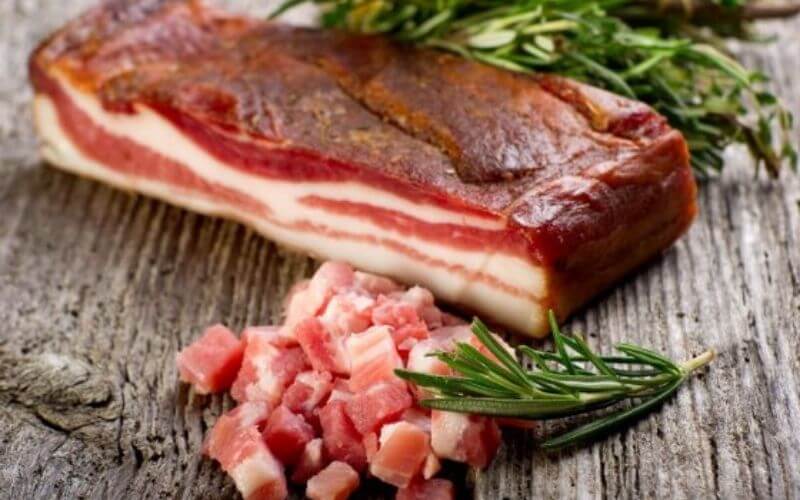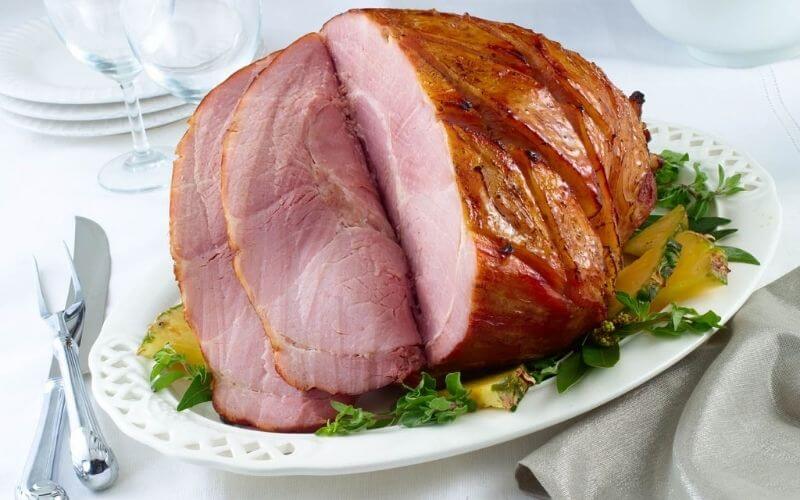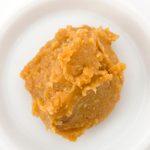A large percentage of the world–most of the population, in fact– is in love with processed lunch meats. These include the assortment of deli meats and things like sausages and bacon; which make up 75% of our dream breakfasts and perfect sandwiches.
But while we do love our cured/processed meats, there is a little concern about these meats. The WHO has even classed the compounds in processed meats as carcinogens, or cancer-causing chemicals.
While most people are unwilling to give up their bacon and jerky, they do want to learn more about cured meats and what goes in them. People looking for the healthiest deli meat have often come across the term uncured meat. But what is uncured meat?
This article aims to find out exactly that. We look at the difference between cured and uncured meat, how uncured meat differs from fresh meat, and whether uncured ham lunch meat is a thing.
By the time you’re done with this article, you won’t ever be stumped when your butcher offers you an uncured lunch meat product, or when you see nitrate-free deli meat at the grocery counter.
What is Cured Meat?

Cured meats are any meats that have been preserved using salts, nitrates, or nitrites. These compounds not only extend the shelf life of the meat but also add flavor and color to it. Curing is a traditional method of meat preservation that has been used for centuries, and it’s still widely used today.
How Cured Meats are Made
The process of curing meat involves several steps. First, the meat is rubbed with a mixture of salt, sugar, and nitrites. The meat is then allowed to rest for a specified amount of time, during which it absorbs the curing mixture. The meat is then hung to dry and cure for several weeks, depending on the type of meat and desired flavor profile.
During the curing process, the salt and nitrites help to prevent the growth of bacteria that can cause spoilage. Additionally, the curing process helps to break down the proteins in the meat, making it more tender and flavorful.
Types of Cured Meats
There are many different types of cured meats, each with its own unique flavor and curing process. Some popular types of cured meats include:
- Prosciutto: A thinly sliced Italian ham that’s typically served as an appetizer or on sandwiches.
- Salami: A cured sausage that’s often made with pork, beef, or a combination of the two. Salami is typically sliced and served as a snack or on sandwiches.
- Bacon: Cured pork belly that’s sliced and fried or used as a flavoring in dishes.
- Ham: A cured and smoked pork leg that’s often sliced and served as a main course or on sandwiches.
- Pastrami: A cured beef brisket that’s seasoned with spices and served thinly sliced on sandwiches.
Health Risks of Cured Meats
While cured meats are delicious and have a long shelf life, they’re not without their health risks. The nitrates and nitrites used in the curing process have been linked to health issues, including an increased risk of cancer.
Additionally, many cured meats are high in sodium, which can lead to high blood pressure and other health issues. If you’re concerned about the health risks of cured meats, consider limiting your consumption or opting for uncured meats instead.
What is Cured Meat?
Uncured meat refers to meat that has not been treated with nitrates or nitrites during the curing process. Instead, it’s usually cured with natural substances like celery juice or celery powder, which contain naturally occurring nitrates.
These natural nitrates convert to nitrites during the curing process, giving the meat a pink color and curing it without the use of synthetic nitrates.
Production Process of Uncured Meat
The production process of uncured meat is similar to that of cured meat, but with a few key differences. Instead of using synthetic nitrates, natural nitrates from celery juice or celery powder are used to cure the meat.
The meat is first rubbed with a mixture of salt, sugar, and celery juice or powder, then allowed to rest for a specified amount of time. During this time, the natural nitrates from the celery juice or powder convert to nitrites, which cure the meat and give it a pink color.
The meat is then hung to dry and cure for several weeks, depending on the type of meat and desired flavor profile.
Health Risks of Cured Meats
Bacterial Contamination
Uncured meats are not treated with synthetic nitrates, which means they’re more susceptible to bacterial contamination. Bacteria like listeria and salmonella can cause serious illness, and they can grow on uncured meats if they’re not stored properly. It’s important to follow proper food safety guidelines when handling and storing uncured meats to reduce the risk of bacterial contamination.
Sodium Content
While uncured meats don’t contain synthetic nitrates, they can still be high in sodium. Many types of meat naturally contain sodium, and some uncured meats are still salted during the curing process. High sodium intake can lead to high blood pressure and other health issues, so it’s important to monitor your sodium intake and consume uncured meats in moderation.
Nitrate Content
While uncured meats don’t contain synthetic nitrates, they do contain natural nitrates from celery juice or powder. While these natural nitrates are considered safer than synthetic nitrates, they can still convert to nitrites during the curing process. Nitrites have been linked to health issues when consumed in large quantities, so it’s important to monitor your nitrate intake and consume uncured meats in moderation.
Cured vs. Uncured Meat
This brings us to several questions. Are uncured meats better than cured products? Are cured meats inherently unhealthy?
| Cured Meat | Uncured Meat | |
| Preservation Method | Preserved using synthetic nitrates or nitrites | Preserved using natural nitrates from celery juice or powder |
| Health Risks | Linked to health issues when consumed in large quantities | Considered safer and healthier due to use of natural nitrates |
| Taste | Distinct salty and smoky flavor | Milder taste |
| Production Process | Meat is rubbed with a mixture of salt, sugar, and nitrites, then hung to dry and cure | Meat is rubbed with a mixture of salt, sugar, and natural nitrates from celery juice or powder, then hung to dry and cure |
| Examples | Bacon, ham, salami, prosciutto | Uncured bacon, uncured ham, uncured salami, uncured prosciutto |
Cured meat is any meat that has been preserved using salts, nitrates, or nitrites. Curing meat not only extends its shelf life but also adds flavor and color to it. It’s a traditional method of meat preservation that has been used for centuries. The curing process involves applying a mixture of salt, sugar, and nitrates to the meat, then allowing it to dry and cure for a specific amount of time.
One of the main differences between cured and uncured meat is the use of synthetic nitrates. Cured meat contains synthetic nitrates, which have been linked to health issues when consumed in large quantities. Uncured meat, on the other hand, uses natural nitrates, which are considered safer and healthier.
Another difference is the taste. Cured meat has a distinct salty and smoky flavor, while uncured meat has a milder taste. This is because the natural nitrates used in the curing process of uncured meat do not have the same impact on the flavor profile of the meat as synthetic nitrates do.
What is Uncured Ham?

Uncured ham is also sometimes labeled as fresh ham. It is essentially the same cut as cured ham. So how are the two different?
Uncured ham is not injected with the chemical brine, smoke, or salt that are used when curing meat. When buying uncured ham, you might notice that it has a slightly different, yet naturally occurring color than the pink cured ham we are more used to.
This color difference is because the nitrates used in the brine of cured meat generally give cured meat a pronounced pink hue. Although it may sound contradictory, uncured meat is cured. The curing process contains natural ingredients instead of chemical ones.
In other words, the only difference between cured and uncured ham is the ingredient used to cure the meat. Uncured ham will use a brine made from salt and celery powder as a preservative, while cured ham will use a sodium nitrite brine instead.
Equipment for Cooking Uncured Ham
If you want to choose a healthier option, you can try making uncured ham right at home. This will be a safer option as you can control the amount of salt in the ham. Besides fresh ham, all you need is the following equipment:
How to Cook Uncured Ham
Follow these steps to make the best ever uncured ham right at home. This will cure a 5-pound hunk of ham and you can scale the recipe up for larger amounts of meat.
Ingredients
- 2 liters of boiled and filtered water
- 1/2-3/4 cup kosher salt
- 1 cup turbinado sugar
- 1/4 teaspoon ground cloves
- 1 tablespoon pink salt
- 1 heaping tablespoon of celery powder
- Glaze of your choice
- A plastic bowl or pot big enough to contain the ham while fitting in your fridge
Directions
1. Remove the skin from your ham, and trim off all the fat, if necessary.
2. Clean your bowl or container thoroughly and make sure it is almost sterile.
3. In the bowl, dissolve the salt, sugar, spice, and celery powder in the water until completely mixed in.
4. Scrub the surface of the ham to remove as much bacteria as possible. Submerge the ham in the brining solution, making sure every inch of it is underwater and nothing is sticking out.
5. Keep the submerged ham in the fridge for 3 days. The heavier the ham, the longer you need to brine it. After a day and a half, turn over the ham so that all its parts are equally brined.
6. Once the time is up, rinse the ham surface to remove some of the excess salt. You can pat it dry with kitchen towels and then rub it down with salt-free seasoning.
7. Then, smoke the ham at 325°F until it registers 145°F in the deepest part of the center. This can take up to 5 hours depending on the ham’s thickness. In the last hour of smoking, brush on the glaze of your choice.
This kind of ham will stay fresh in the fridge for a week. When vacuum sealed and frozen, it can last for months.
Have Any Other Questions?
Below you’ll find answers to questions we get asked often about uncured meat.
01. Can I Eat Uncured Meat When Pregnant?
While there is no danger to eating cured and uncured meat while pregnant, if you are concerned about your baby’s health, you can ditch deli meats altogether until your child is born.
02. Is Boar’s Head Meat Processed?
Boar’s Head offers meat products that don’t have chemical preservatives. Does Boars Head have nitrates? While they don’t contain sodium nitrite, they do have nitrates derived from celery and sea salt aka naturally occurring preservatives.
03. Is Deli Meat Bad for Health?
Processed meats are generally considered unhealthy because they contain plenty of salt, nitrites, and often fat. As a result, it is best to eat them in moderation.
04. Is Deli Meat Processed?
Deli meats are classed as processed products because they have added preservatives and curing agents to stop them from going bad.
05. What Does Uncured Meat Mean?
Uncured meats refer to the fact the meat isn’t cured with chemical additives like sodium nitrite and other nitrates. Instead, they are preserved with things like salt, sugar, and celery powder.
In Outline
Although there is a bit of health concern when it comes to lunch meat, it is evident that the world isn’t giving up bacon any time soon. But when you know the answer to ‘what is uncured meat?’ you will realize it opens up lots of options at the butchers.
If you want to avoid chemicals, you can opt for uncured meats for your bologna sandwich cravings. But whether you prefer uncured meats, or want to stick to the traditionally cured products, remember that moderation is the key for processed foods!






